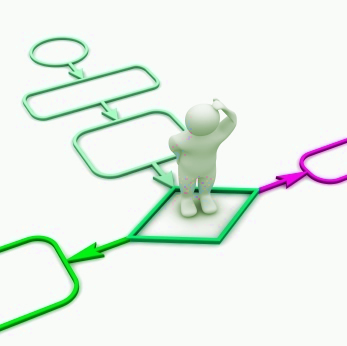Employee Aptitude Survey Ability Tests
The Employee Aptitude Survey (EAS) ability tests are suitable for many roles and often these tests can be used together or in combination with other psychometric tests, depending on the need or desired competencies to be measured.
The basic concept that guided the development of the EAS tests was maximum validity per minute testing. Each individual test is 5 - 10 minutes in length.
The theory being the most efficient way to maximise validity is through the use of a combination of short tests, each of which measures a unique and important factor.

Here is a list of the Employee Aptitude Survey Tests
EAS1 – Verbal Comprehension Ability Test
- 5 minutes in length
- 30 test items
EAS1 – Verbal Comprehension Ability Test
- 5 minutes in length
- 30 test items
This verbal comprehension ability test measures the ability to understand written words and the meaning associated with them. For each item, the test taker selects the synonym for a designated word from the four possibilities presented. This ability test determines how broad a vocabulary a person has for both written and oral communication. This test is relevant to all roles where a strong grasp of the English language is required.
Niche Consulting has developed extensive NZ business norms for this test , in addition to the test publishers norms.
EAS2 – Numerical Ability
- 10 minutes in length.
- 74 test items.
Measures the ability to add, subtract, multiply and divide. The ability test has three parts:
- Part I measures facility in working with integers.
- Part II measures facility with decimals
- Part III measures facility with common fractions.
EAS3 - Visual Pursuit Ability
- 5 mins, timed.
- 30 test items.
This ability test measures the ability to make rapid, accurate scanning movements with the eyes. For each test item, the test taker visually traces lines through an entangled network resembling a schematic diagram. This test is useful for production roles or semi-skilled workers who need to install equipment according to schematic diagrams.
EAS4 - Visual Speed and Accuracy Test
- 5 mins, timed.
- 150 test items.
This ability test measures the ability to compare numbers or patterns quickly and accurately. Each test item consists of two alpha-numeric strings of characters. The test taker compares the two strings and indicates whether they are the same or different. This test is useful for assessing people who need to have a high level of accuracy when checking information, such as clerical roles
EAS5 – Space Visualisation
- 5 mins, timed.
- 50 test items.
This ability test measures the ability to visualise forms in space and to manipulate objects mentally. This ability test consists of pictures of piles of blocks. The test taker determines how many other blocks in the pile touch a specific block. Space Visualisation is a strong component of “mechanical aptitude”.
EAS6 – Numerical Reasoning Ability Test
- 5 minutes in length.
- 20 test items.
Niche Consulting has developed extensive NZ business norms for this test , in addition to the test publishers norms.
EAS7 – Verbal Reasoning Ability Test
- 5 minutes in length.
- 30 test items.
This verbal reasoning ability test measures the ability to combine separate pieces of information and to form conclusions on the basis of that information. A series of facts is presented for the test taker to review. Five conclusions follow each series. Based upon the facts given, the test taker indicates whether each conclusion is true, false, or uncertain.
This verbal ability test looks at logical thinking and reasoning skills when dealing with written and verbal information. The test result can clarify whether an individual will make sound logical decisions by seeing the wider consequences as opposed to becoming too narrowly focused.
Niche Consulting has developed extensive NZ business norms for this test , in addition to the test publishers norms.
EAS10 – Symbolic Reasoning
- 5 mins, timed.
- 300 test items.
Symbolic Reasoning is the ability to mentally manipulate abstract symbols and to make logical judgments and decisions. Each problem contains a statement and a conclusion. The examinee indicates whether the conclusions are true, false, or impossible to determine.
EAS Batteries
Below are some suggested test batteries of EAS tests for different levels of roles, many of which we would also recommend an IQ test (such as the Wonderlic) is added to:
- Professional, Managerial and Supervisory Battery – EAS1, EAS6, and EAS7
- Clerical – EAS1, EAS2, EAS4 and EAS7
- Production / Mechanical Battery – EAS1, EAS2, EAS3, and EAS5
- Technical Battery – EAS2, EAS5, EAS6 and EAS10

Multiple Assessments and the Impact on Predictive Validity
When we combine assessments in a battery we can increase the predictive validity of the testing if the tests are of approximately the same validity and have low inter-correlations.
Guilford & Fruchter (1978) summed up the different effects of lengthening tests and including more tests in a battery as follows:
In general, if there is a choice between lengthening of tests in a battery to make them more reliable and adding more tests of different kinds that contribute unique valid variances, the decision should certainty go to the second alternative.”
We can therefore increase the validity of testing by using more than one assessment method.
Test Length and Validity
The following table illustrates how validities increase as test length increases. The calculations are based upon typical reliability and validity figures of .70 and .40 respectively for a 5 minute test. The difference in validity between a 5 minute test and a test of infinite length is only a .078 difference (.478-.400).
1 minutes – r= .270
2 minutes – r = .332
3 minutes – r = .365
4 minutes – r = .386
5 minutes – r = .400
6 minutes – r = .410
7 minutes – r = .410
8 minutes – r = .418
9 minutes – r = .424
10 minutes – r = .430
11 minutes – r = .434
12 minutes – r = .437
13 minutes – r = .440
14 minutes – r = .443
15 minutes – r = .445
Test of infinite length r = .478
